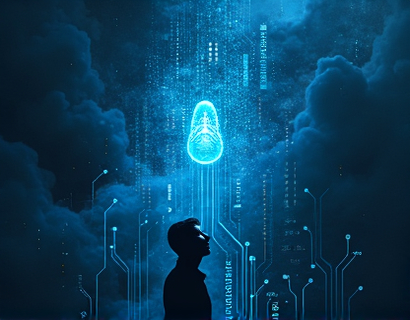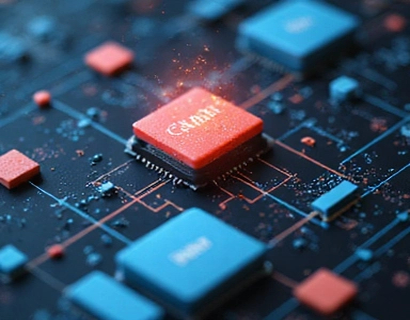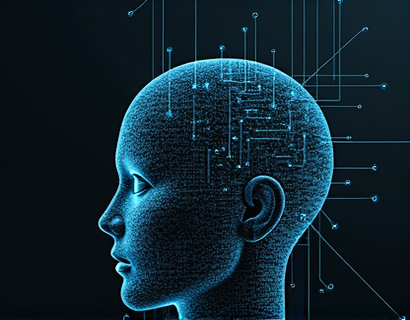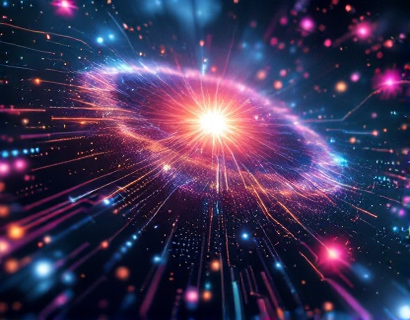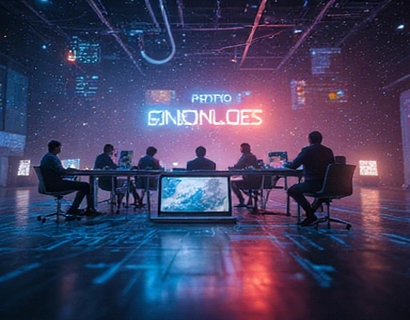AI-Powered Cosmic Learning: Interactive Exploration with Customizable Settings for Educators and Space Enthusiasts
In the ever-evolving landscape of education, the integration of artificial intelligence (AI) has opened new avenues for interactive and personalized learning experiences. This article delves into the realm of AI-powered cosmic learning, a cutting-edge tool designed to make space and astronomy accessible, engaging, and customizable for both educators and space enthusiasts. By leveraging advanced AI technologies, this platform offers a unique opportunity to explore the vastness of the universe through interactive simulations and personalized learning settings.
The core of this AI-powered learning tool lies in its ability to adapt to the user's knowledge level, interests, and learning pace. Whether you are a curious student, a dedicated educator, or an avid space enthusiast, this platform tailors the cosmic adventure to suit your specific needs. The AI engine behind this tool is trained on a vast dataset of astronomical data, scientific research, and educational content, ensuring that the information provided is accurate, up-to-date, and comprehensive.
Interactive Exploration Features
One of the standout features of this AI-powered cosmic learning tool is its interactive exploration capabilities. Users can embark on virtual journeys through the solar system, explore distant galaxies, and delve into the mysteries of black holes and dark matter. These interactive experiences are designed to be immersive and engaging, using 3D visualizations and real-time data to bring the cosmos to life.
For educators, these interactive features can be seamlessly integrated into lesson plans, allowing students to actively participate in their learning process. The platform supports a variety of interactive elements, such as quizzes, puzzles, and simulations, which can be customized to align with educational standards and objectives. This not only enhances student engagement but also helps in reinforcing key concepts and fostering a deeper understanding of complex astronomical phenomena.
Customizable Learning Settings
Recognizing that each learner is unique, this AI-powered tool offers extensive customizable settings to cater to diverse learning preferences. Educators can adjust the difficulty level, content focus, and interaction style to match the needs of their students. For instance, a teacher might choose to emphasize certain topics, such as planetary science or astrophysics, and set the simulation to a level that challenges but does not overwhelm the class.
Space enthusiasts can also benefit from these customizable settings. Whether you are interested in the latest discoveries in exoplanet research or the history of space exploration, the platform allows you to tailor your learning experience to your specific interests. The AI engine continuously adapts to your interactions, providing more in-depth information on topics you find intriguing and skipping over those you have already mastered.
Personalized Learning Paths
A key advantage of this AI-powered cosmic learning tool is its ability to create personalized learning paths for each user. The AI analyzes your progress, identifies knowledge gaps, and suggests relevant content to fill those gaps. This adaptive learning approach ensures that users are always challenged appropriately and that their learning journey is both efficient and effective.
For educators, this feature is particularly valuable as it allows for differentiated instruction within the classroom. The platform can generate individualized learning plans for each student, enabling teachers to monitor progress and provide targeted support where needed. This personalized approach not only enhances learning outcomes but also helps in identifying and addressing learning difficulties early on.
Interactive Simulations and Visualizations
To make the learning experience more engaging and intuitive, the platform incorporates advanced interactive simulations and visualizations. These tools allow users to manipulate variables, observe the effects of different conditions, and gain a deeper understanding of complex concepts. For example, students can simulate a rocket launch, adjusting parameters such as fuel load, engine thrust, and atmospheric conditions to see how these factors impact the mission.
Visualizations play a crucial role in making abstract astronomical concepts more tangible. Users can explore the life cycle of stars, the structure of galaxies, and the dynamics of celestial mechanics through interactive 3D models. These visual tools are not only educational but also captivating, making the learning process enjoyable and memorable.
Real-Time Data Integration
Another significant feature of this AI-powered cosmic learning tool is its integration of real-time data from space agencies and observatories around the world. This ensures that the information provided is always current and based on the latest observations and discoveries. Users can access live data on celestial events, such as planetary alignments, solar flares, and asteroid passes, providing a dynamic and up-to-date learning experience.
For educators, real-time data integration offers an excellent opportunity to incorporate current events into the curriculum. By discussing recent discoveries or events with students, teachers can make the subject matter more relevant and exciting. This approach also helps in fostering a sense of connection to the global scientific community and the ongoing pursuit of knowledge in the field of astronomy.
Educational Resources and Support
To complement the interactive features, the platform provides a comprehensive library of educational resources. These include detailed articles, videos, and interactive modules covering a wide range of topics in astronomy and space science. The content is curated by experts and is designed to be accessible to users of all levels, from beginners to advanced learners.
Educators will find a wealth of resources to support their teaching, including lesson plans, activity ideas, and assessment tools. The platform also offers professional development opportunities, such as webinars and workshops, to help teachers stay updated on the latest teaching methods and technological advancements in the field of space education.
User Community and Collaboration
Recognizing the value of community and collaboration in learning, this AI-powered cosmic learning tool includes a feature-rich user community. Users can connect with peers, share insights, and collaborate on projects. This community aspect fosters a sense of belonging and encourages users to engage more deeply with the platform.
For educators, the community can serve as a valuable network for exchanging ideas, resources, and best practices. Space enthusiasts can join forums and discussion groups to explore their interests with like-minded individuals, participate in citizen science projects, and contribute to the collective knowledge base.
Accessibility and Inclusivity
Accessibility and inclusivity are core principles in the design of this AI-powered cosmic learning tool. The platform is designed to be user-friendly and accessible to individuals with diverse abilities and backgrounds. Features such as text-to-speech, adjustable text sizes, and high-contrast modes ensure that the learning experience is inclusive for all users.
Moreover, the platform offers content in multiple languages, making it accessible to a global audience. This inclusivity not only broadens the reach of space education but also promotes a more diverse and representative community of learners and educators.
Future Developments and Innovations
As AI technology continues to advance, the potential for innovation in cosmic learning is vast. Future developments may include more sophisticated AI-driven tutoring systems, augmented reality (AR) experiences, and even virtual reality (VR) simulations that transport users to different corners of the universe. These advancements will further enhance the immersive and interactive nature of the learning experience, making space and astronomy even more accessible and engaging.
The integration of machine learning algorithms will also enable the platform to better understand user preferences and learning patterns, leading to even more personalized and effective learning paths. Additionally, the platform may incorporate more collaborative tools, allowing users to work together on complex projects and simulations, fostering a sense of global scientific collaboration.
In conclusion, the AI-powered cosmic learning tool represents a significant leap forward in space education, offering a customizable, interactive, and engaging learning experience for educators and space enthusiasts alike. By leveraging the power of AI, this platform not only makes the wonders of the universe more accessible but also empowers users to become active participants in the quest for knowledge and discovery.














